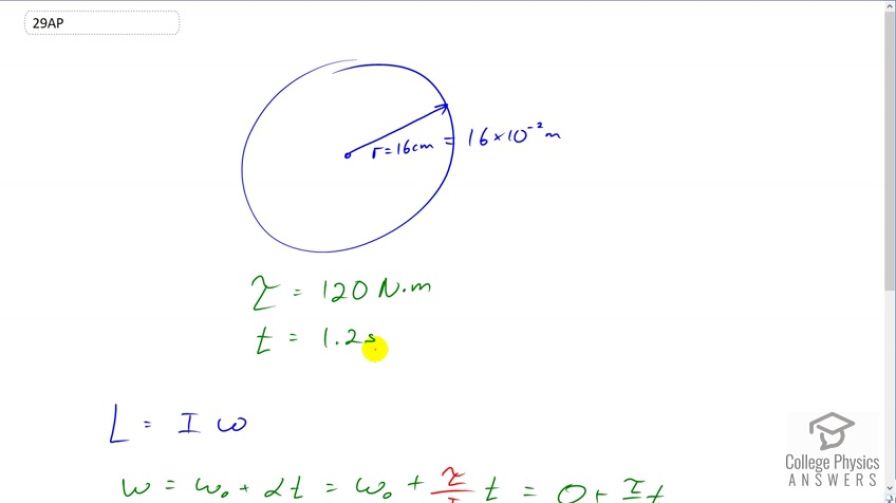Question
A globe (model of the Earth) is a hollow sphere with a radius of 16 cm. By wrapping a cord around the equator of a globe and pulling on it, a person exerts a torque on the globe of 120 N • m for 1.2 s. What angular momentum does the globe have after 1.2 s?
Final Answer
Solution video
OpenStax College Physics for AP® Courses, Chapter 10, Problem 29 (Test Prep for AP® Courses)

vote with a rating of
votes with an average rating of
.
Calculator Screenshots
Video Transcript
This is College Physics Answers with Shaun Dychko. We have a hollow globe of radius 16 centimeters that has a torque of 120 Newton meters exerted on it for 1.2 seconds. Our job is to figure out what is the angular momentum going to be after 1.2 seconds. So the angular momentum is the moment of inertia multiplied by its final angular velocity and we have to calculate the angular velocity. We'll say it's the initial angular velocity plus the angular acceleration multiplied by time. That is omega naught plus the net torque divided by the moment of inertia, making a substitution for angular acceleration there, multiplied by time. We're going to assume that this earth starts from rest so this is zero plus tau over i times t. So we'll substitute this in place of omega here in our formula for angular momentum. So we have i times tau over i times t and the i's cancel and so our angular momentum is going to be the torque multiplied by time. So it's 120 Newton meters times 1.2 seconds which is 144 Newton meter seconds.
